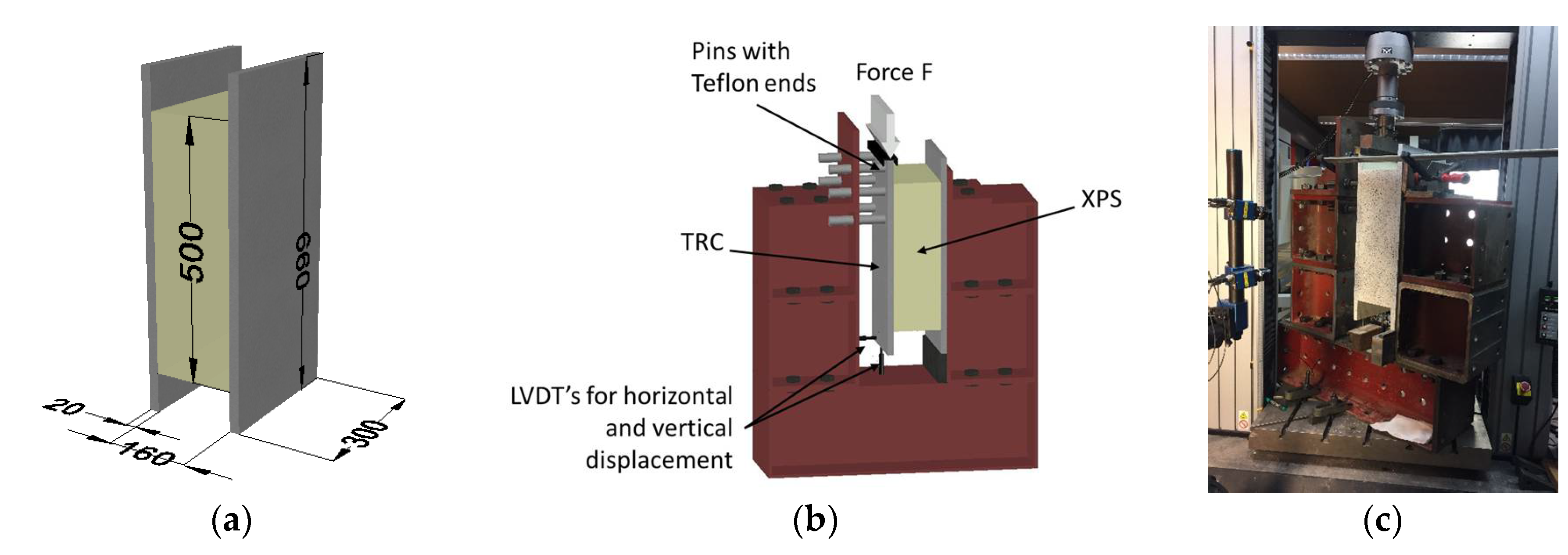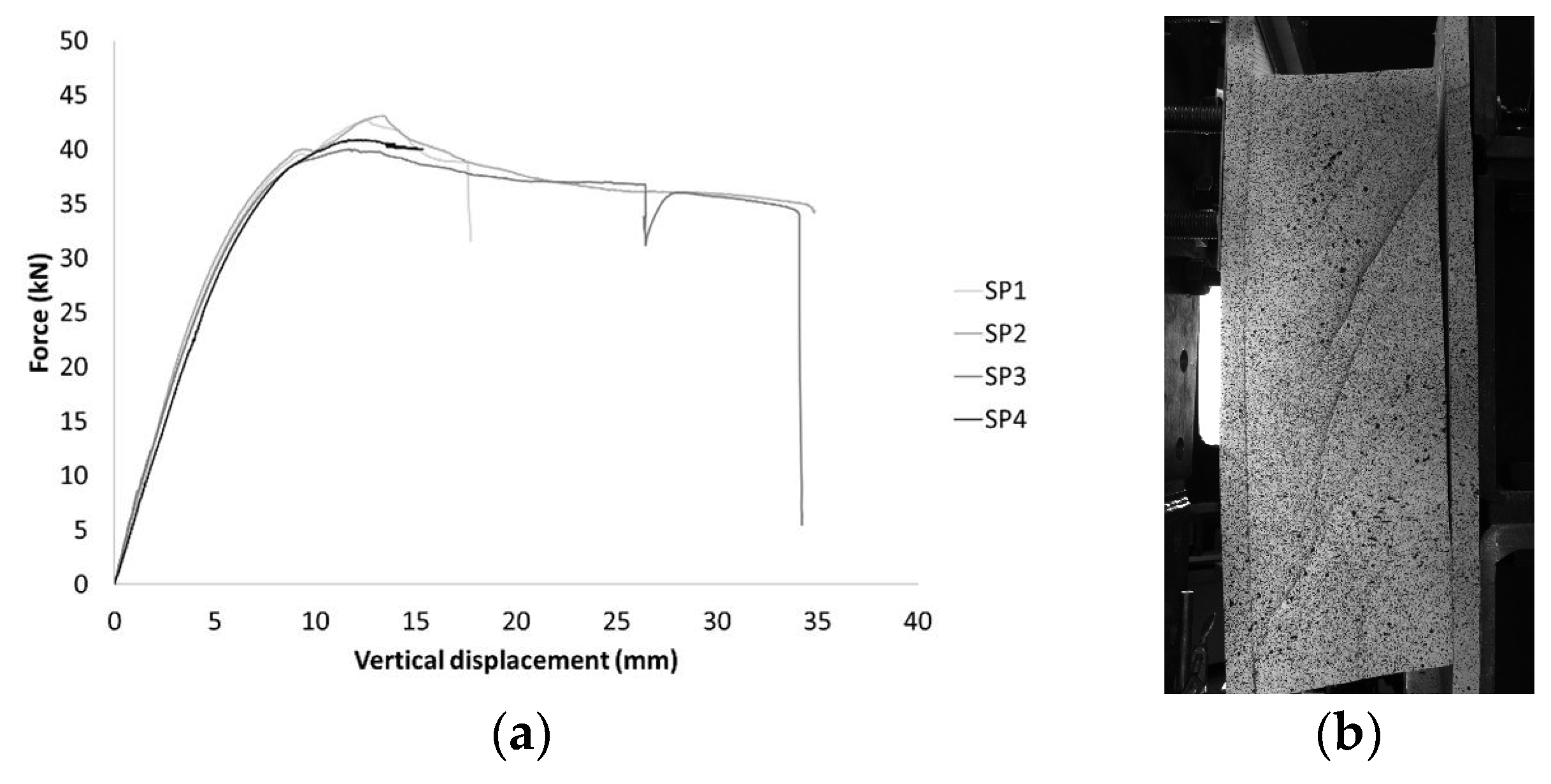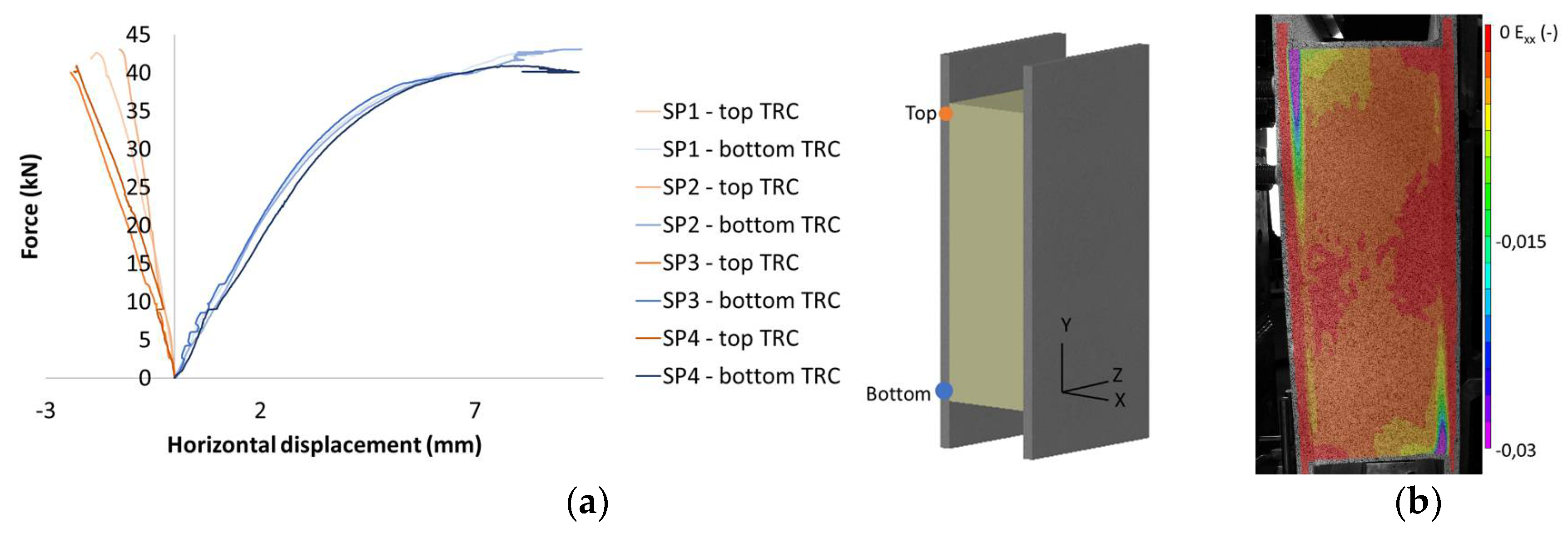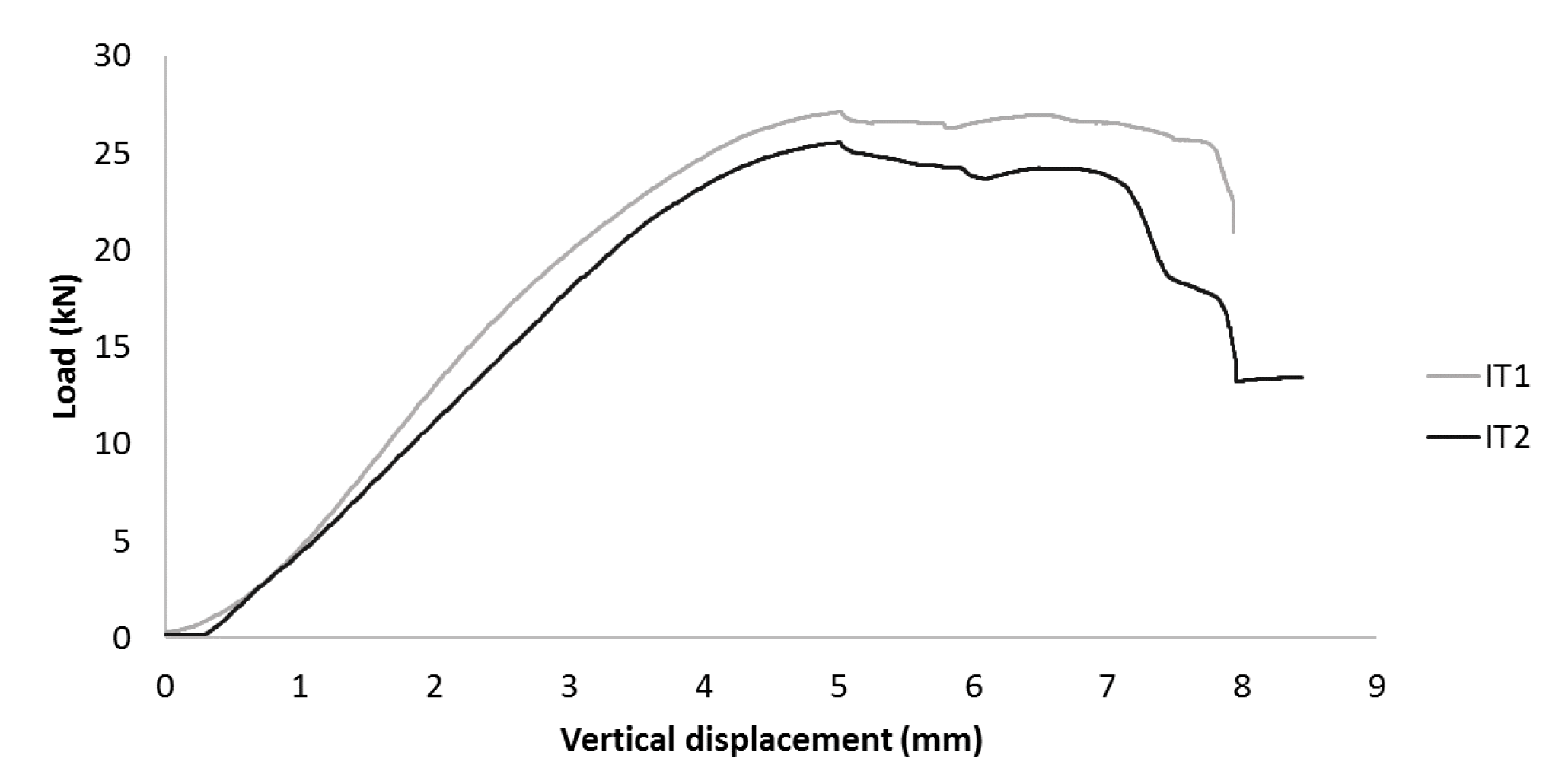Characterization of the Bond between Textile Reinforced Cement and Extruded Polystyrene by Shear Tests †
Abstract
:1. Introduction
2. Materials and Methods
2.1. Textile Reinforced Cement
2.2. Extruded Polystyrene
2.3. Test Set-Ups
2.3.1. Double-Lap Shear Test According to Shams et al.
2.3.2. Inserted Type
2.4. Production Method
3. Results
3.1. Double-Lap Shear Test
3.2. Inserted Type Set-Up
4. Conclusions
Author Contributions
Acknowledgments
Conflicts of Interest
References
- Shams, A. A Novel Approach for the Production and Design of Load-Carrying Sandwich Panels with Reinforced Concrete Facings; RWTH Aachen: North Rhine-Westphalia, Germany, 2015. [Google Scholar]
- D’Ambrisi, A.; Feo, L.; Focacci, F. Experimental analysis on bond between PBO-FRCM strengthening materials and concrete. Compos. Part B Eng. 2013, 44, 524–532. [Google Scholar] [CrossRef]
- Ortlepp, R.; Hampel, U.; Curbach, M. A new approach for evaluating bond capacity of TRC strengthening. Cem. Concr. Compos. 2006, 28, 589–597. [Google Scholar] [CrossRef]
- Wozniak, M.; Tysmans, T.; Verbruggen, S.; Vantomme, J. Quality of the bond between a Strain Hardening Cement Composite stay-in-place formwork and concrete: Comparison of two experimental set-ups. Constr. Build. Mater. 2017, 146, 764–774. [Google Scholar] [CrossRef]
- Horstmann, M. Zum Tragverhalten von Sandwichkonstruktionen aus Textilbewehrtem Beton; RWTH Aachen: North Rhine-Westphalia, Germany, 2010. [Google Scholar]
- Sika. Sikagrout-217 Fine Concrete Data Sheet; Sika: Le Bourget, France, 2017; pp. 818–821. [Google Scholar]
- Fraas, V. SITgrid701 Datenblatt. 2017. [Google Scholar]
- British Standards Institute. EN 14509: Self-Supporting Double Skin Metal Faced Insulating panels—FACTORY Made Products—Specifications; British Standards Institute: London, UK, 2013. [Google Scholar]








Publisher’s Note: MDPI stays neutral with regard to jurisdictional claims in published maps and institutional affiliations. |
© 2018 by the authors. Licensee MDPI, Basel, Switzerland. This article is an open access article distributed under the terms and conditions of the Creative Commons Attribution (CC BY) license (https://creativecommons.org/licenses/by/4.0/).
Share and Cite
Vervloet, J.; Kapsalis, P.; Verbruggen, S.; Kadi, M.E.; Munck, M.D.; Tysmans, T. Characterization of the Bond between Textile Reinforced Cement and Extruded Polystyrene by Shear Tests. Proceedings 2018, 2, 419. https://doi.org/10.3390/ICEM18-05275
Vervloet J, Kapsalis P, Verbruggen S, Kadi ME, Munck MD, Tysmans T. Characterization of the Bond between Textile Reinforced Cement and Extruded Polystyrene by Shear Tests. Proceedings. 2018; 2(8):419. https://doi.org/10.3390/ICEM18-05275
Chicago/Turabian StyleVervloet, Jolien, Panagiotis Kapsalis, Svetlana Verbruggen, Michael El Kadi, Matthias De Munck, and Tine Tysmans. 2018. "Characterization of the Bond between Textile Reinforced Cement and Extruded Polystyrene by Shear Tests" Proceedings 2, no. 8: 419. https://doi.org/10.3390/ICEM18-05275
APA StyleVervloet, J., Kapsalis, P., Verbruggen, S., Kadi, M. E., Munck, M. D., & Tysmans, T. (2018). Characterization of the Bond between Textile Reinforced Cement and Extruded Polystyrene by Shear Tests. Proceedings, 2(8), 419. https://doi.org/10.3390/ICEM18-05275





